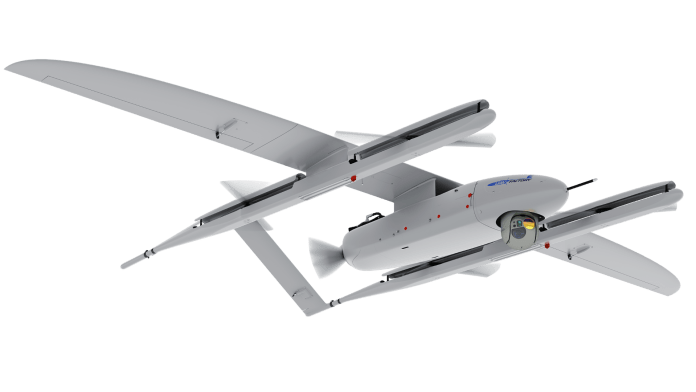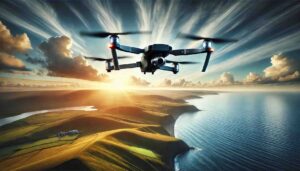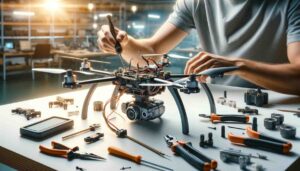Wide applications of vertical take-off and landing(VTOL) aircrafts such as drones or even the recent manned kind of them and increasing development of these aircraft and their different types, designers are facing many challenges to improve its performance.
One of the challenges in flying Quad-in-plane type of VTOL drones is having a good deal with the vertical propulsion system during
the cruise flight phase. Generally, most VTOL drones power off their vertical engines to save more energy and power them up again to hover or land at the proper position.
Due to the airflow at the cruise speed, the vertical propellers continue to keep moving, which induces drag, more battery consumption hence less flight time. One of the most common ways is to use the brake feature of the ESCs. As far as there is no position feedback out of the general RC brushless motors, keeping the propeller direction the same as the aircraft’s heading after braking to reduce the drag coefficient is tricky.
To address this concern, let’s take a look at the recent high-end technology/products in the market.
AEROFLOW Boom mechanism
Edge Autonomy(AKA UAVfactory) recently introduced the Penguin C Mk2 VTOL’s AEROFLOW Boom Technology enables a 20% increase in flight endurance. This patented technology showcases hoods over the vertical lifting rotors that automatically enclose the lifting rotors while the vehicle is in horizontal flight, significantly reducing drag.

T-MOTOR's new propeller locking technology
T-motor as a well-known producer of drones propulsion systems recently unveiled a video that shows that they found a solution for VTOL drones. This function enables the vertical motor propellers to lock at a fixed position related to the motor base. Currently, there is not enough information about it, although it seems this feature will be available just on some specific series of their products.
Using asymmetrical propeller
At first glance, it sounds a little weird! Although, in the aerospace field, it’s normal! By using propellers that use non-same shape blades at both sides. Most of these propellers are custom made and have been designed for a specific aircraft, these propellers have a different shape on each side.
The specific shape of the propeller makes the propeller stay in the desired position after powering off.
In terms of performance, these propellers compare to the general symmetric ones are much less efficient. The key point is, the Quad-in-plane drones designers keep trying to maximize the flight performance during the cruise flight phase.
The latest edition of Stalker VXE UAV shows that the vertical propellers got an update to enhance the flight performance by using asymmetrical propellers.





